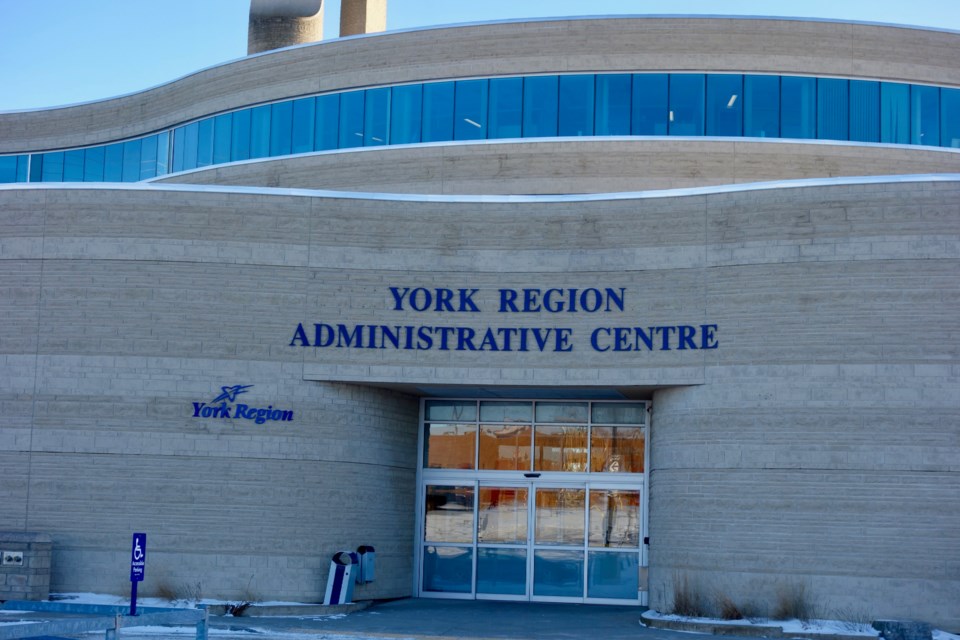NEWS RELEASE
REGIONAL MUNICIPALITY OF YORK
*************************
York Region Board of Health is advocating maintaining its current public health unit within the geographical boundaries of the Regional Municipality of York, and the governance of the health unit remain under the responsibility of York Regional Council, which has served as the Board of Health for the public health unit since 1978.
The report outlines the Board of Health’s position and appeals to the Province to leave the current structure intact.
“York Regional Council understands the mandate and important work our public health unit does every day to ensure the health and well-being of our communities,” said Chair and CEO Wayne Emmerson. “Transitioning our health unit into a new entity and outside of the Board of Health’s jurisdiction will result in decreased service delivery and be less responsive to the needs of our growing, diverse population. The public health model in York Region is a unique and proven model within the Province of Ontario and one we strongly believe must be maintained.”
The Board of Health stressed if provincial legislation is passed to change the existing structure of York Region Public Health, it must not result in reduced care of York Region residents, increased taxes to maintain current service levels, or a combination of both.
In April, the provincial government announced proposed legislation to implement 10 health entities with autonomous boards as of April 1, 2020. The 10 entities would replace 35 current provincial public health units. If passed, York Region Public Health would be combined with the southern part of the Simcoe Muskoka Health unit as one public health entity, adding a geographic area close to four times the size of York Region.
The proposed merger with Simcoe County would create the third largest Ontario public health entity in terms of population. Planning for the health needs for York Region residents is already a significant undertaking.
Immigration plus a diverse mixture of urban, suburban and rural communities present numerous challenges when planning and delivering public health programs to residents. Delivery of the services and programs will not be consistent across the new proposed geographic area, and would be far less responsive to the local needs of residents.
In proposed legislation, municipalities have been asked to identify a 10 per cent reduction in their overall public health budgets by April 2020. Municipalities will also be required to contribute funding for 40 per cent of all public health services delivered through the new health entity by April 2021.
The proposed changes to the geographic boundaries and governance model for public health would create an additional tax levy on York Region residents in the range of $12.7 million, beginning in 2020.
Historically, the Province has cost-shared public health service delivery at a rate of 75% provincial and 25% municipal for most programs. York Regional Council has consistently approved additional funding beyond the minimum cost-sharing requirements on the advice of the Board of Health, allowing for the delivery of additional support, when needed.
This has allowed Public Health to better meet the needs of residents with proactive and responsive programs and address health service gaps in the Region. The same level of services will not be available under the new proposed model and budget reductions.
"Public health has been working effectively through municipalities for nearly 200 years,” said Dr. Karim Kurji, York Region’s Medical Officer of Health. “The success of public health units across our province is the result of a focus on prevention, planning, education and awareness. These changes proposed by the province will create lasting negative health outcomes for residents. The strain will be felt within our global health care system.”
Investments in public health save money and improve the health of York Region residents:
- Every $1 invested to add fluoride to drinking water saves $38 in dental care
- Every $1 invested in tobacco prevention programs saves $20 in future health care costs
- Every $1 spent on vaccinating children with the measles-mumps-rubella vaccine saves $16 in health care costs
- Every $1 spent on early childhood health and development saves up to $9 in future spending on health, social and justice services
- Every $1 spent on mental health and addictions saves up to $7 in health care costs and $30 dollars in lost productivity and social costs
Public health is one of York Region’s 15 core services and is directly connected to key regional priorities including the 2019-2023 Strategic Plan and Vision 2051. As a municipal service, public health helps ensure healthy communities by working alongside other municipal functions, including urban planning, water and wastewater, housing, child care, income supports and employment. These services have direct connections to the social determinants of health, demonstrating the many advantages of maintaining a direct municipal connection to Public Health.
The Regional Municipality of York consists of nine local cities and towns and provides a variety of programs and services to 1.2 million residents and 52,000 businesses with over 636,600 employees. More information about the Region’s key service areas is available at york.ca/regionalservices.
*************************
